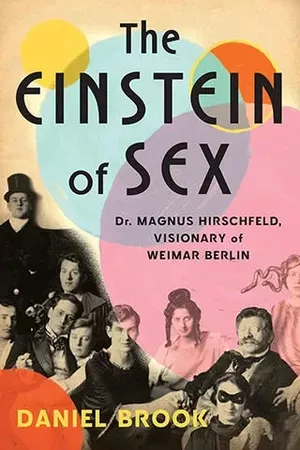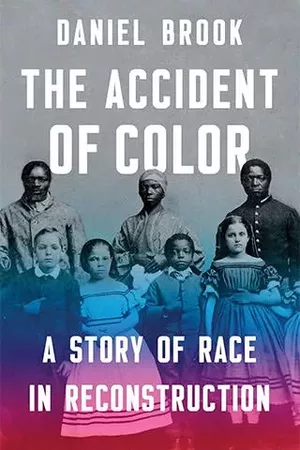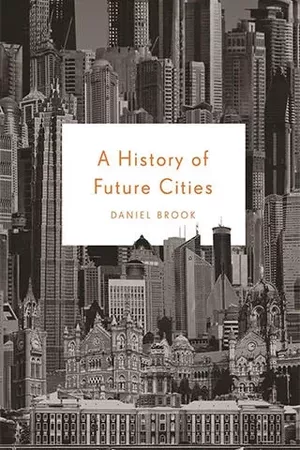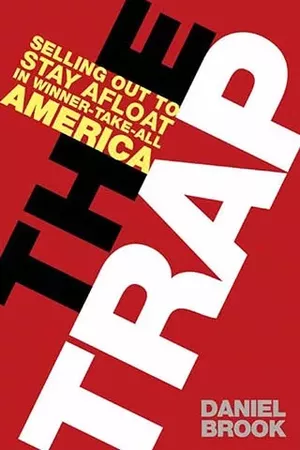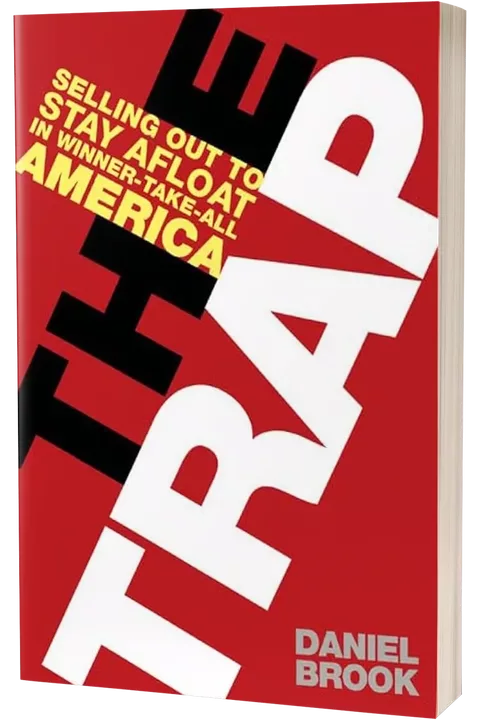Excerpt from *The Trap* by Daniel Brook
THE PAM PERD GENERATION
Waiting on the drink line at a wedding reception, I explained the premise of this book to my ex-girlfriend’s new boyfriend. From the social circumstances alone, I was not expecting a sympathetic hearing. Having been tipped off by the groom that the new boyfriend worked on Wall Street for Lehman Brothers, and seeing his advantage in height and weight, I hoped he wasn’t a belligerent drunk. To my relief, he greeted my ideas with enthusiasm (and sobriety). “ ‘Sellout’ is harsh,” he said, “but it’s not too strong a word.” A leftist with a liberal arts degree, he had gone to Wall Street after years stuck in unpaid internship limbo convinced him to give up on his dream of a career as a muckraking journalist. “That’s how hegemony works,” he offered, referencing a key concept of Antonio Gramsci, the Italian Marxist theorist. “The system can contain all of the dissenters.”
This seemingly surprising exchange no longer surprised me. During my months of interviewing young professionals, I often felt as if I was hearing the same joke over and over—the one about the anticorporate corporate lawyer; or the anticonsumerist adman; or the Lehman Brothers leftist. Each time, the joke got a little less funny. And in the end, I still enjoyed its first telling the most.
My first interview had been with Pam Perd, who served as national director of public relations for Billionaires for Bush, the tongue-in-cheek “pro-Bush” activist group, during the last presidential campaign. To lampoon administration policies that exacerbate economic inequality, the Billionaires, who go by clever noms de guerre, protest in tuxedos and evening gowns, smoking cigars and wielding wads of fake cash. Pam Perd came late to the group; her favorite name, Lucinda Regulations, was already taken.
While serving as national PR director often meant putting in upward of forty hours a week, the work was all pro bono. Pam already had a full-time salaried position: doing PR for mere millionaires for Bush. In her day job, Pam handled public relations for Fortune 500 companies at one of the largest public relations firms in the world.
“I was very, very happy to hear that my main client did not give money to the Bush campaign. That made me smile. But overall I know a lot of our clients at my firm absolutely did give to the Bush campaign and that makes me uncomfortable,” the jean jacket–clad thirty-one-year-old confessed in her local coffee shop, on the edge of Tompkins Square Park in Manhattan’s East Village. “It makes me question what I’m doing and why, but at the same time I also know I need to survive. I need to feed myself and house myself. So you have to do what you have to do. That’s why you end up having two lives.”
Despite her day job helping giant corporations push product, Pam eschews consumerism in her own life, living simply in a fifth-floor walk-up studio apartment. Her income gives her financial security, not a ritzy lifestyle. “I’m going to want to have a family and I have to prepare for that,” Pam says, referring to rising college tuition costs. Her two lives, she admits, are a compromise: “I would much prefer to work in the nonprofit world where I’d be able to work on issues that I feel very passionately about, but at the same time, the nonprofit world is not going to pay me what I need to make to feel comfortable and have a sense of security.”
I met Pam on one of the handful of perfect spring days allotted to New York City each year. I had last been to Tompkins Square Park the previous fall, having happened upon a reading of Allen Ginsberg’s poetry, part of the annual Howl Festival of East Village Arts. I took my seat on a park bench as a young poet howled the eponymous poem, mourning the destruction of “the best minds of my generation,” by a system Ginsberg dubbed “Moloch,” after the fiery-eyed Babylonian idol lit from within by the smoldering flesh of sacrificed children. “Moloch whose mind is pure machinery! Moloch whose blood is running money!” the poet raged. “Moloch whose soul is electricity and banks!” The reading was sponsored by the Discover Card.
From the introductory bios it became clear that none of the readers at the festival lived in the East Village. Instead, they hailed from places like Brooklyn, Philadelphia, even Poughkeepsie—the very places young poets fled to the East Village from in the beatnik era. In today’s East Village, where a sign on a nearly completed condominium informed passersby that units were available “from $3.2 million to over $12 million,” there are no poets, only millionaires and people like Pam.
Claire, a twenty-seven-year-old activist, can’t afford to live in the East Village. In fact, she can barely afford to be an activist. “I’m pretty anxious about it and often have the sense that I can’t hold out much longer, that I just have to find a position that may compromise some of my political views,” she told me. With a public policy degree and a Fulbright under her belt, Claire now works at a nonprofit in Jackson Heights, Queens, that combats the trafficking of sex workers around the globe. “This job’s been a dream come true in that it’s within my value system to work alongside the people that you ultimately advocate for,” she explained, her mild face radiating concern not just for her clients but for herself as well. On paper, her $35,000-a-year salary puts her squarely within the middle class. But a middle-class salary can’t buy a middle-class life in a major American city these days. To make ends meet, Claire works fourteen hours each weekend taking reservations at Café des Artistes, a long-established French restaurant on the Upper West Side, where the only artistes to be found are on the waitstaff.
“It’s a confusing time. I’m not sure how I got into this position,” she told me over dosas at an inexpensive South Indian restaurant near her office. “I always thought in grad school and with a Fulbright that I would end up having a pretty different lifestyle now.” Claire had gotten a full ride for graduate school and her Fulbright grant covered living expenses while she conducted research on trafficking in Chile, but years of just covering costs meant that her undergrad debt never got paid off. Today, Claire works seven days a week to share an apartment in Long Island City with an editorial assistant at Random House.
Claire knows she could earn more—considerably more—if she sold out, abandoning her human rights work for a corporate job. But that would mean abandoning work on a problem she has spent years preparing herself to combat. She could also leave New York for cheaper pastures, but that would mean abandoning the potential for global impact that comes with having the United Nations a few subway stops from the office. With her skills, talents, and passion, Claire has found her calling. Yet she doesn’t know how much longer she can afford to follow it.
Despite their divergent careers and incomes, Pam and Claire have a lot in common. They were both born middle class—Pam to a pair of financial planners on Long Island; Claire to a high school teacher and a professor in New Mexico. They both attended selective private colleges. They are both politically progressive, well educated, and drawn to big-city life. And they both faced the same hard choice but made different decisions. Pam earns a comfortable living but pays the psychological price of doing a job she doesn’t believe in; Claire finds her work fulfilling but pays the economic price of just getting by.
A generation ago, these two women would have earned similar incomes and would have likely lived in the same neighborhood—say, the Upper West Side. These days, in a more class-stratified city and nation, they can’t. If they came together socially, it would likely be at the kind of event that brings together people from similar educational backgrounds but divergent income brackets—the drink line at a wedding, for example. And as with my run-in with my ex’s new Wall Street beau, after moving beyond simple introductions of “I work in PR,” “I work at a nonprofit,” they might find out they had more in common than they assumed.
Or maybe they wouldn’t. Maybe Pam would dismiss Claire as sanctimonious. Maybe Claire would dismiss Pam as a hypocrite. The “gotcha game” of deciding who’s a bigger sellout has become the leading parlor game of recent liberal arts college graduates, and they might be tempted to play a round. But the game misses the point. Just as women balancing work and family waste energy relentlessly attacking each other for the choices they’ve made rather than questioning why the United States does not offer free universal child care until age five, so educated young people waste energy criticizing one another’s decisions rather than questioning a system that imposes such wrenching choices. Whatever one thinks of Pam’s or Claire’s decisions, the choice educated, idealistic young people now face—to be a sellout or a saint—has no place in a prosperous modern democracy.
While the pressure to sell out has grown in recent years, the phenomenon is not new. Starting in the 1980s, the media began to note that more and more of the best and the brightest were going to work for corporate America. Reagan was in power, greed was good, and young people acted accordingly, the thinking went. But when these trends didn’t change in the 1990s, new explanations arose—and they sounded like rationalizations.
In their 1995 book, The Winner-Take-All Society, economists Robert Frank and Philip Cook probed their students at Cornell and Duke looking for answers. They concluded that their students were being lured into lucrative fields like management consulting and away from vital but less remunerative work like teaching middle school because of new reward structures in corporate America that were pushing executive pay through the roof. Being economists, Frank and Cook viewed their students as little more than profit-maximizing calculators who saw a high-stakes lottery and naturally wanted a ticket. Their analysis focused on the proverbial carrot, never considering the stick.
In the real world that exists outside of economics department models, some bright young people are determined to get rich, but many just don’t want to be poor. And as America has been transformed into a nation with literally millions of millionaires, a concentration of wealth not seen since the Gatsby era, the prices of the finite goods desired by the now-numerous wealthy have been bid up wildly, far exceeding inflation. That would be fine if all that those “millionaires next door” wanted were Impressionist paintings and similar luxuries. But America is a nation where what are considered human rights in the rest of the developed world are sold to the highest bidder. Today’s young people have to make far more money than their parents’ generation needed simply to attain a home, health care, and college educations for their children—no yachts, no Van Goghs. Is it any surprise that those with the opportunity to make enough to stay afloat—even those, like Pam Perd, who disdain corporate America—generally take it?
Yet conservative apologists for rising inequality claim it doesn’t matter if the rich get richer as long as everyone else isn’t getting poorer. Apologist-in-chief Mickey Kaus explains in The End of Equality that though he agrees with George Orwell’s observation from 1930s Spain that “a fat man eating quails while children are begging for bread is a disgusting sight,” he isn’t upset by “a fat man eating quails while children are eating Bob’s Big Boy hamburgers”—a rough approximation of the situation in contemporary America. What Kaus fails to see is how a rise in the concentration of wealth reshapes markets, inflating the prices of goods whose supply is fixed, like homes within a reasonable commuting distance of a major city or degrees from top colleges. In postwar America, when income tax rates went up to 91 percent, there was an effective limit on the incomes of the corporate elite and, in turn, on the prices of the commodities they desired. But since Reagan and his tax cuts, the rich have proliferated and gotten richer—and the prices of these commodities have gone up for everyone.
Reaganomics transformed the face of metropolitan America. A 2006 Brookings Institution report found that in a dozen metro areas studied, the proportion of middle-class central-city neighborhoods was cut in half between 1970 and 2000; the number of poor and rich neighborhoods grew. Most metropolitan neighborhoods were middle class in 1970; only 41 percent were by 2000. In the most cosmopolitan and influential parts of the country, the middle-class family has become an endangered species, hunted almost to extinction. By 2000, the New York area had the smallest share of middle-class families of any major metropolitan area. In the Los Angeles area, which had been majority middle class in 1970, by 2000 only 28 percent of its neighborhoods were middle class. As joining the ever-shrinking metropolitan middle class has become less and less of an option for the rising generation, those young people with the educational credentials to have some say over whether they end up rich or poor are more and more likely to exercise the option to become rich, making the necessary career choices. And public service and intellectual fulfillment rarely make the cut. The new economic realities are shaping people’s lives, closing off certain career and lifestyle options. They are reducing freedom.
Bright young people have gotten the message. A biomedical researcher with a recently minted PhD colloquially explained the phenomenon: “$250,000 is the new $100,000.” This sounds like an incredibly obnoxious statement, but when you learn that nearly half of children from six-figure-earning families are now going into debt just to go to college, you realize his observation is, sadly, right on target. And the post-Reagan decline in social mobility puts even more pressure on parents to ensure they can send their child to a top college, giving them their ticket to the right side of the ever-growing class divide. Under these circumstances, what an earlier generation took for granted and those in the rest of the developed world still do, has become a hefty six-figure proposition. The European stereotype is that Americans are greedy; older Americans stereotype younger ones as a mercenary generation out to get rich quick. What neither the Europeans nor the senior citizens understand is that young Americans want more money because they need more money. Even if they don’t covet mansions and luxury cars, they need big bucks for housing, health care, and education. In the 1980s, young people sold out to enjoy a life of luxury; now they sell out to stay afloat.
Making more money means leading a different working life. The tiny handful of careers that are surefire routes to the top of the income distribution—management consulting, corporate law, investment banking—are neither enjoyable nor fulfilling for many creative, educated people. This is not to say that no one’s true calling is to become a corporate tax attorney, but merely to assert that few talented college freshmen, let alone talented toddlers, tell their parents they want to be corporate lawyers when they grow up. A life singularly devoted to the overwork and overconsumption enshrined by corporate America holds little appeal for many liberally educated people. Their voting behavior bears this out—in the 2000 election, anticorporate crusader Ralph Nader outpolled MBA-toting George W. Bush among Yale undergrads. So do opinion surveys that show government and public service as the areas in which the majority of top college graduates would ideally like to work. Certainly big money can be as addictive as cocaine, but why do so many try it in the first place? Because a whole host of middle-class careers that are often enjoyable and fulfilling—teaching, writing, music, art, activism, government service—no longer buy the lives they once did. As a result, these fields have been relegated to a mix of moral giants, mental midgets, and trust-fund babies.
In 1970, when starting teachers in New York City made just $2,000 less than starting Wall Street lawyers, people who wanted to teach taught. Today, when starting teachers make $100,000 less than starting corporate lawyers and have been priced out of the region’s homeownership market, the considerations are very different. It may be counterintuitive, but talented young people actually have less control over their lives in a society in which they can get rich quick because, in such a society, the consequences of not getting rich quick become much more serious. When a middle-class income no longer buys a middle-class life, things that rarely or never make one rich become harder and harder to pursue. When it comes to the distribution of wealth, you’re freer when it’s flatter.
In our nation of self-financed higher education, tenuous health-care coverage, and out-of-control housing costs, Adam Smith’s “invisible hand” has hardened into an invisible fist. When you realize a modest existence costs a not-so-modest sum of money, attainable only through a narrow range of unfulfilling jobs, that pang you feel is the invisible fist—and it’s giving you an invisible beatdown.
Copyright © 2007 by Daniel Brook. All rights reserved
